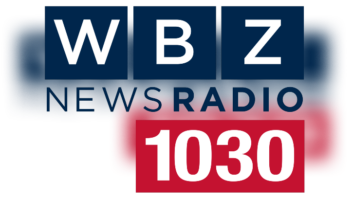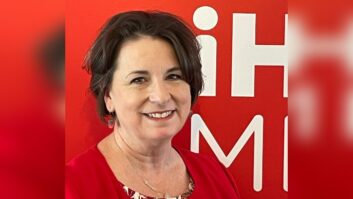Steve Mills joined iHeartMedia as its chief information officer a little more than a year ago. This is one in a series of occasional interviews I’ve launched to help readers learn more about CIOs who work in and around radio. I asked my questions via email. Text edited for clarity.

Steve Mills
Radio World: What are the unique challenges that a CIO at a major 21st century media organization with a big radio broadcast component must face?
Mills: Leading the transition to a digital world. This includes things like reengineering business processes and supporting systems to operate more in real time and less in batch mode; developing capabilities to view traditional broadcast metrics like spots and mentions as audiences and impressions; providing our customers and account teams with interactive tools for measuring results, etc.
Also, introducing central management into a broadcast radio environment that has traditionally been managed at the station or market level. This is a big shift in culture as well as a big change for processes and tools.
RW: What attributes in a professional résumé are media companies looking for in a CIO?
Mills: In the case of iHeart, I think the most important attributes — and these are not specific to media, I think they apply to any modern CIO role at a large company — were hands-on understanding of new technologies and trends and the sorts of transformation they enable; experience in leading change within a large, established enterprise; ability to understand business priorities and apply them to IT decision-making; and bias towards speed and getting to short-term results with maximum impact.
RW: How does the CIO of iHeartMedia interact with its broadcast engineers and engineering tech team?
Mills: The broadcast engineers and engineering tech team at iHeart report into me as CIO. The boundary between IT systems and engineering systems in our markets is pretty blurry, and the jobs of IT and engineering folks on our team also overlap. In particular, the systems that support programming and playout, as well as the tools used by the programming teams and traffic teams, are all IT systems. This makes it a pretty natural fit for engineering to sit beside “traditional” IT teams and work side-by-side with them.

Steve Mills makes a point at the white board in San Antonio as Ace Horan, SVP of IT business operations, listens.
RW: What philosophies do you bring to the job of CIO?
Mills: Before starting a project, be very clear on the reason we are doing it, the value it brings and how we will measure it. Focus on outcomes and follow up after to make sure we got the value we expected.
Break all big projects into small chunks with clear business value. The goal should be to deliver something at least once per quarter on each major workstream.
Speed wins. It is better to have something good now than something perfect later.
Continuous interaction and collaboration between IT and business teams make for much better outcomes.
Find quick wins at the intersection of what is easy to do and what is impactful. Keep delivering these while working on the big stuff in parallel.
Sponsor lightweight “shadow IT” inside the business teams. They are much happier and more productive when they can self-serve and do not have to come to IT for everything they need. SaaS platforms and lightweight reporting and workflow tools enable this.
Continuously evaluate IT operating costs to ensure we are operating as efficiently and effectively as possible. My favorite ways to do this: vendor management, problem management, automation, self-service.
RW: In coverage of trends in information management, we hear a lot about enterprise-wide planning. What does that mean in your job?
Mills: At iHeart, it means things like understanding which business processes and systems need to operate across our broad portfolio and factoring these out — for example, finance, HR, legal, real estate. Also, looking horizontally across our portfolio of businesses and finding economies of scale that can ensure a cost-efficient operation. This includes things like vendor management, shared services and back-office systems.
RW: What is the scope of the iHeartMedia IT operation, broadly? Looking to assess the scope.
Mills: I would think of it as: thousands of employees, 175+ global markets, 850 broadcast stations reaching more than a quarter of a billion listeners a month with broadcast alone, as well as a massive digital footprint. All of our IT metrics are scaled to support this.
MORE ON STEVE MILLS
According to the company’s 2015 hiring announcement, Steve Mills oversees all aspects of the information technology structure for iHeartMedia and Clear Channel Outdoor, “to ensure the alignment and optimization of the company’s overall technology systems with the business priorities of its multiplatform assets,” which include iHeart’s many radio stations, iHeartRadio, national events and CCO’s numerous digital billboards.
The company said his hire was part of an increasing emphasis on technology solutions, “everything from programmatic advertising to data collection and analysis.”
He has three decades of experience in IT, enterprise systems and software engineering. He was CIO of Motorola Mobility and of cloud hosting solutions provider Rackspace Hosting, and held executive positions at T-Mobile, BearingPoint and Intelligent Technologies. He holds a Ph.D. in computer science from Southern Methodist University.
RW: Cybersecurity is on everyone’s mind in media and beyond. What can you share generally about your approach or mindset?
Mills: As you can imagine, any discussion of that could compromise our efforts.
RW: What major software tools across the enterprise has the company found that it feels have helped with operational efficiencies?
Mills: We are using a SaaS IT service management tool that has been very impactful. Formalizing the way we manage incidents, issues and changes and improving repeatability and metrics has made us more operationally effective and efficient.
We have also rolled out a variety of productivity and workflow tools that are really helping business teams to be more effective.
The combination of cloud, agile development and continuous integration and deployment, along with the tools that support them, have been transformative for our development teams. We get new capabilities to market in weeks instead of months or years. It is a big mindset shift and a powerful one.
You can read Radio World’s 2016 profile of FCC CIO David Bray at radioworld.com/bray.










